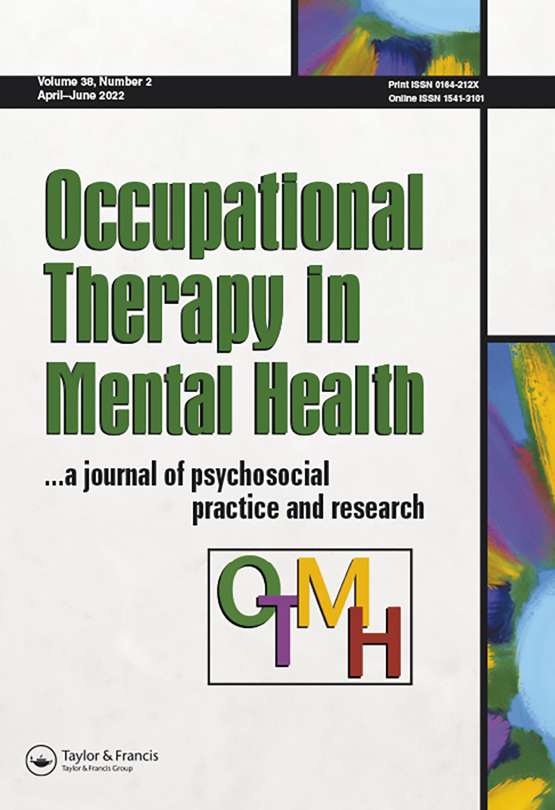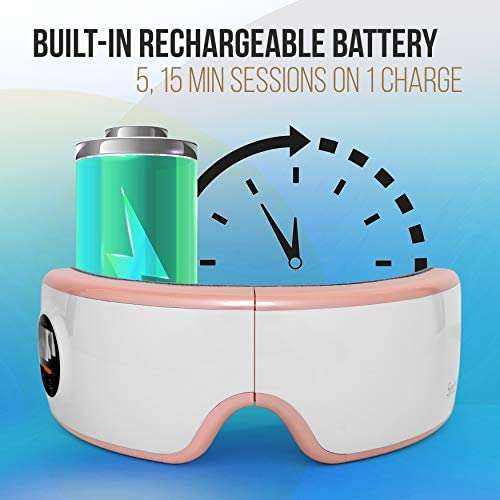Background
Psychosis is a profound human experience that has significant implications for the experience of and engagement in occupations. The work of the earliest practitioners of what became known in the US as occupational therapy was focused on psychosis. Over the last three years members of AOTA’s Psychosis Community of Practice (CoP) have explored various perspectives on the lived experience of psychosis and understandings about its impact on occupation. In this work, CoP members have engaged in particular with perspectives challenging psychiatry’s framing of psychosis as solely or primarily a medical disorder and its implications for occupational therapy practice.
Special Issue Goals
The goal of this special issue is to share international occupational therapy and occupational science scholars’ perspectives on psychosis and occupation that contribute to the broader critique of psychosis as solely or primarily a medical disorder. We are interested in contributions that explore psychosis as a human experience and the implications for taking up such a stance in occupational therapy.
Special Issue Editors
Deborah Pitts, University of Southern California
Erin McIntyre, University of St. Augustine for Health Sciences
Carol Lambdin-Pattavina, University of New England
Elizabeth Griffin Lanigan, University of New Hampshire
Twylla Kirchen, Rocky Mountain College
Christine Linkie, University at Buffalo
Elise Blanton-Hubbard, Berkeley, California
Adults living with SMI often have multiple disorders. These disorders frequently accompany one another, along with a substantial number of general medical illnesses such as heart disease, cancer, diabetes, and neurological illnesses. Mental, substance use, and general health problems and illnesses are frequently intertwined, and coordination of all these types of health care is essential.
From a population health perspective, the needs of people with serious mental illness (SMI) are growing and complex; about 1 in 25 adults has an SMI in a given year. People who are diagnosed with schizophrenia, bipolar illness, and major depressive disorder—the most common SMI diagnoses—can benefit from effective occupational therapy interventions that enhance occupational functioning and participation. In 2015, 4% of U.S. adults age 18 or older (an estimated 9.8 million adults) had an SMI in the past year ( Center for Behavioral Health Statistics and Quality [CBHSQ], 2017 ). Women accounted for 64.5% of adults with SMI ( CBHSQ, 2017 ). The prevalence rate also varied across age groups, with a higher rate—5.0%—in the age groups between 18 and 44 and 4% in the 45–64 age group.
This issue of the American Journal of Occupational Therapy (AJOT) comes at a pivotal time in society. Occupational therapy practice in mental health is gaining significant momentum. National association and state-level advocacy efforts, federal and state initiatives, and population health trends provide new opportunities to expand the occupational therapy mental health practice and research agenda.
National behavioral health care efforts have opened opportunities to reignite occupational therapy mental health practice and research. The profession’s person-centered and occupation-based practice fits well with the growing needs of people with serious mental illness (SMI) served in community-based settings. The nine articles in this special issue provide a growing body of evidence to support the effectiveness of occupational therapy interventions for adults with SMI to enhance health management skills and promote independence in living a balanced and satisfying life. However, much more high-level research is required to explicitly investigate the contributions of occupational therapy in all areas of occupation for adults with SMI and to broaden the available evidence base to inform occupational therapy practice.
National and state occupational therapy associations have been involved in advocacy on the federal level supporting the expansion of occupational therapy in community behavioral health care settings, now known as Certified Community Behavioral Health Clinics (CCBHCs). As an innovative model of behavioral health care, CCBHCs are required to provide coordinated, integrated care that is person centered and recovery oriented and to integrate physical and behavioral health care ( Substance Abuse and Mental Health Services Administration, 2015 ). Although not identified as required staff in CCBHCs, licensed occupational therapy practitioners can provide expertise to clients served in CCBHCs by identifying barriers to wellness and recovery such as cognitive impairments; sensory needs; and difficulties with activities of daily living (ADLs), instrumental activities of daily living (IADLs), and social interactions.
This federal interdepartmental leadership seeks collaboration and shared accountability of all federal agencies, in partnership with all levels of government and other stakeholders, to create a mental health system that addresses the needs and desires of all individuals living with SMI or SED and their families. The goal is to effectively support these individuals and families to achieve healthy lives characterized by pride, self-worth, hope, dignity, and meaning.
Make specific recommendations for actions that federal departments can take to better coordinate the administration of mental health services for adults with SMI and children with SED.
Report on advances in research on people with SMI and SED related to prevention, diagnosis, intervention, treatment and recovery, and access to services and supports;
In 2016, a federal commission was created to address the needs of adults with SMI and children with serious emotional disturbance (SED) and their families. The 21st Century Cures Act (Pub. L. 114-225) provided the authority for establishing the Interdepartmental Serious Mental Illness Coordinating Committee (ISMICC; 2017) , which aims to enhance coordination across federal agencies to improve service access and delivery of care for people with SMI or SED. The ISMICC is charged to
Occupational therapy practitioners contribute to evaluation and treatment of adults with SMI by
-
Identifying individual strengths, goals, skills, and other factors important for wellness and recovery planning;
-
Performing psychosocial evaluations that include housing, vocational, and educational status as well as social support networks and community participation;
-
Helping clients develop day-to-day independent living skills and improve their functional capacity;
-
Teaching compensatory strategies that mitigate the impact of the illness and reduce symptoms through engagement in healthy roles and routines; and
-
Promoting health and wellness through the use of everyday activities.
Occupational therapy practitioners use a wellness and recovery-oriented approach because it is congruent with the profession’s person-centered and occupation-based practice, engages clients in their health management, and promotes independence in living a balanced and satisfying life. The nine articles in this special issue offer evidence supporting the effectiveness of occupational therapy interventions for adults with SMI in all of these areas.
Read and colleagues (2018) present a systematic review that demonstrates how occupational therapy practitioners can uniquely add to early intervention teams with their strong focus on function through occupational engagement. Citing research that demonstrates that specific interventions in the earliest stages of SMI can offset cognitive impairments and improve functioning and social relationships, these authors found that effective evidence-based practices for occupational therapy interventions with this population include cognitive remediation (CR), cognitive–behavioral therapy (CBT), supported employment and supported education, and family psychoeducation. Moderate to strong evidence supports CR, and mixed evidence supports CBT to improve general functioning. It is a victory for clients and advances both occupational therapy and public health practice when early intervention and prevention of disability are the focus of collaboration with people experiencing early signs and symptoms of SMI.
Trauma-informed practice is essential in today’s society. Occupational therapy practitioners frequently work with children who experience victimization and its physical and mental health sequelae. Berg et al. (2018) examined the mental health impacts of participation for youth with disabilities (YWD) in the child welfare system. They conclude that occupational therapy can play an important role in increasing opportunities for engagement in activities that may enhance the mental health of these vulnerable youth. Participation in meaningful activities can improve both overall health and transition to independence for this population. Occupational therapy practitioners can apply their specialized skills in task analysis and environmental modification to optimize participation in meaningful activities for victimized YWD, thereby facilitating social inclusion and resilience.
Obesity is a major challenge for many people with SMI. Brown and coworkers (2018) present a systematic review of weight loss interventions for people with SMI delivered in community settings. They found that people with SMI can lose weight with targeted interventions; however, more research is needed to determine the most effective approaches for weight loss and the amount of time needed to achieve weight loss goals. Given the high rate of medical comorbidity in this population, greater involvement by occupational therapy practitioners would support the development of weight loss interventions that address the cognitive impairments common in this population and strategies to develop and sustain healthy routines. Occupational therapy practitioners can play an important role in designing and delivering weight loss interventions to address the wellness needs of people with SMI.
Obesity is not a problem only for people with SMI, of course. Barclay and Forwell (2018) describe how occupational therapy practitioners in bariatric surgery programs used the Canadian Occupational Performance Measure (COPM) as part of their preoperative and postoperative evaluation process. Using the COPM, practitioners revealed a high prevalence of cognitive and affective issues related to exercise and eating behavior. The study illustrates that there is more to consider among people seeking bariatric surgery than body mass index and points to the potential of occupational therapy as a means of improving self-esteem, encouraging self-care, and promoting healthy behaviors through engagement in meaningful activities. COPM data can be used to grade occupation-based interventions aimed at improving self-esteem and encouraging people to adopt healthy eating behaviors and exercise. The long-term effects of these interventions can facilitate and support overall functioning, mental and physical health, and social well-being.
As a means to develop meaningful community participation and assume new roles, adults with SMI consistently identify a desire to work or go to school. With expertise in identifying clients’ strengths and goals and addressing their challenges, occupational therapy practitioners are well positioned to collaborate with adults with SMI and support their engagement in education and employment. In a systematic review of current research, Noyes et al. (2018) found strong evidence for interventions that could be provided by occupational therapy practitioners to address employment, including those based on the Individual Placement and Support model, along with several forms of cognitive remediation and social skills training. Either individually or in combination, these forms of intervention were shown to have several positive outcomes for participants, including significantly increased competitive employment rates, longer job retention, and improved quality of life.
Similar positive results were demonstrated by Lee et al. (2018), who report on their study of an innovative employment program in which occupational therapy practitioners served as both team leaders and integral staff members. Noyes et al. (2018) noted that far less available evidence addresses ways to support adults with SMI to start or return to school. Successful participation in occupational therapy–supported education programs was correlated with adhering to a medication routine, having a stable residence, and being motivated to attend the program consistently—all areas that can be supported by occupational therapy intervention in CCBHCs and numerous other care settings.
Addressing performance of ADLs and IADLs in adults with SMI has always been the purview of occupational therapy. Effective performance and maintenance of these skills provide a necessary foundation for health, wellness, and successful community participation. In this issue, D’Amico and colleagues (2018) update the evidence on this topic in a systematic review presenting evidence for interventions to improve and maintain performance and participation in ADLs, IADLs, social participation, leisure, and rest and sleep for people with SMI. Five themes for intervention in these areas were identified: occupation-based interventions, psychoeducation, skills training, cognitive-based interventions, and technology-supported interventions. Strong evidence was found for occupation-based interventions based on individualized, client-centered goals; several manualized programs using psychoeducation methods to support participants in the areas of illness and medication management, living skills, and psychosocial function; and cognitive-based interventions to improve and maintain performance in rest and sleep. Notably, this systematic review identified a significant increase in studies of occupation-based interventions and outcome measures as well as studies of programs implemented by occupational therapy practitioners since the last systematic review of this topic sponsored by the American Occupational Therapy Association (Gibson et al., 2011).
Also addressing IADL performance, Huang et al. (2018) studied the Lawton Instrumental Activities of Daily Living Scale to determine whether change scores on this assessment represent true change in skill for clients with schizophrenia. They conclude that the test–retest reliability of the instrument was acceptable, adding another tool to the repertoire used by occupational therapy practitioners to evaluate performance in this area.
Finally, the Brief Report in this issue describes a pilot study using African drumming as an intervention for adults with mood disorders. Plastow et al. (2018) report on this unique sensorimotor intervention delivered by occupational therapy practitioners that resulted in immediate improvement in mood and experiences of enjoyment for participants. This study provides but one example of the creative possibilities for promoting health, wellness, and quality of life through the use of everyday activities as intervention by occupational therapy practitioners.



